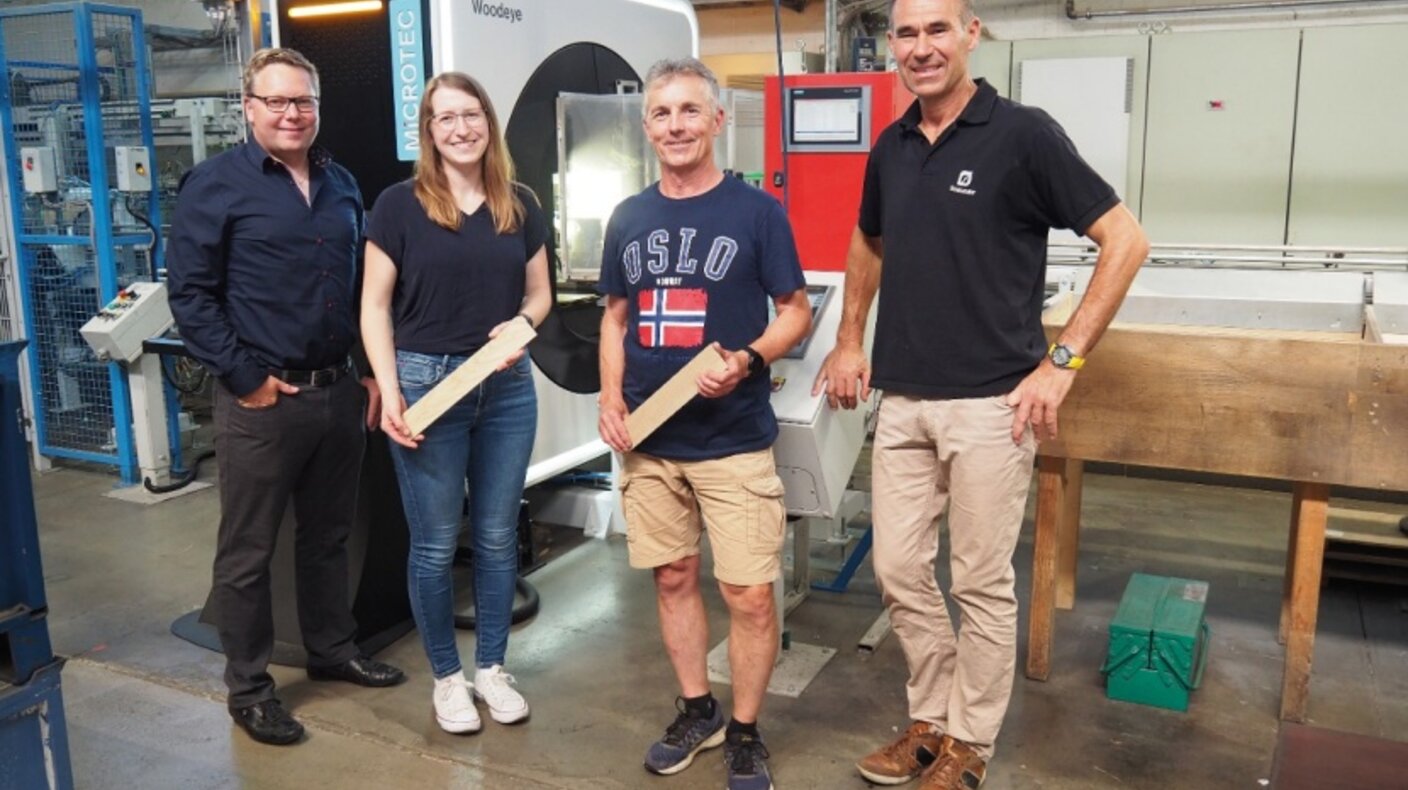Woodeye Parquet: New scanner for aesthetic sorting

Another Woodeye scanner from MiCROTEC has been in operation at Scheucher Holzindustrie for a good six months - it is now the seventh Woodeye system in Mettersdorf. However, it is the first scanner equipped with artificial intelligence for top-layer sorting for two- and three-strip parquet.
For a good year now, Woodeye has been operating under the name MiCROTEC, but the name Woodeye has been retained and now covers all further processing products for hardwood. The Styrian manufacturer has also relied on Woodeye technology for 26 years when it comes to grading the top lamellae of two-strip and three-strip parquet. "Due to the possibility of performing optical sorting with artificial intelligence, we decided to replace the scanner in this area," Kaufmann continues.
MiCROTEC's branch in Rosenheim was responsible for the installation of the scanner. Scheucher decided on the Woodeye Parquet type, which was installed in December 2021. The trial operation started just a few days later. "It is the first new generation hardwood scanner under the umbrella of the MiCROTEC Group. In this joint pilot project, we have used artificial intelligence in an aesthetic sorting process for the first time," explains Peter Hagnberger, Managing Director of MiCROTEC Rosenheim. The project management on the part of the scanner manufacturer was the responsibility of Anna Oswald.
The scanner takes over human perception
Until now, the scanners recognized wood features such as knots, light or dark stripes, or color differences and assigned them to the corresponding grades. However, the overall optical image still had to be checked by the employee. Thanks to artificial intelligence, this can now be done by the scanner. "This means a slat was correctly assigned based on the stored parameters, but the general appearance was not considered. This human feeling or the aesthetic sorting is now taken over by the artificial intelligence of the new scanner," explains Oswald.
New: the counting function
With the Woodeye Parquet, the lamellas are transported through the scanner uprightly. The system processes dimensions from 60 to 70 mm wide, 250 to 510 mm long, and 3 to 6 mm thick. On average, five lamellas per second pass through the scanner. Most of the lamellas come to the scanner with circular saw-cut surfaces. Color cameras and lasers detect all wood features and the format. "So the Woodeye Parquet must also be able to distinguish burn marks, which are sometimes caused by the tool, from the wood features and disregard them because these spots are removed in further processing during sanding," Kaufmann explains. The Woodeye Parquet also has a new counting function. This means that only a certain number, for example, of cross-laces, may be present as a percentage in a sort. Once this is reached, the slat is automatically graded into the next class. "This counting function can be used for all wood characteristics," Oswald clarifies.
At the moment, the Woodeye Parquet assesses oak slats with artificial intelligence. "We have preconfigured the scanner in Sweden and put it into operation. Scheucher provided us with lamellas in seven grading classes for this purpose. We set up a production line in Sweden, stored the slats, and fed the scanner or the software with data accordingly," explains Oswald. Behind this, a simple explanation has years of development, many hours of work, and countless slats that were sorted and classified. For about six months, the technicians in Linköping worked on the optimal setting. "The more data we have available, the better we can adjust the algorithm and the more accurate the classification will be," says Oswald. The Scheucher employees were in Sweden for training so that commissioning in Zehensdorf could be reduced to a minimum later. Only four days after installation, the scanner operated at Scheucher with the previous functions, i.e. pure defect detection and dimension recognition.
Artificial intelligence also ran from day one. During the past months, the algorithm for artificial intelligence was made even more robust by MiCROTEC Linköping. This means that the slats have different characteristics depending on their origin. Nevertheless, they all have to be placed in a suitable sorting class. "The scanner now works very well. The uniformity of the overall appearance has improved significantly and the re-sorting of the oak slats has been eliminated," reports production manager Winfried Konrad.
Artificial intelligence for aesthetic sorting is possible for all types of wood. In the next step, MiCROTEC is now "tackling" beech for Scheucher. "Every type of wood has its challenges in terms of its characteristics. In the case of beech, for example, there are also the color differences in the red heart and those that result from steaming," reports Hagnberger.









